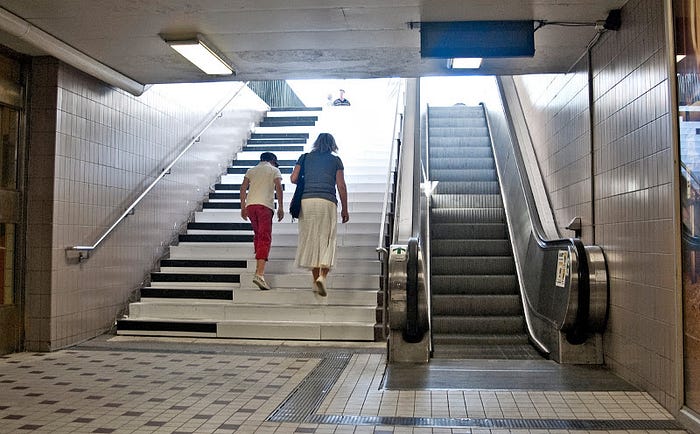Nudges: How you are manipulated into making decisions

With the Coronavirus pandemic around, maintaining personal hygiene and social distancing has been a norm now. Wearing masks and maintaining safe distances in public places is a serious concern. Various measures have been taken by the government to encourage people to follow the social guidelines.
You might have come across such circles drawn about a meter apart employed by banks or grocery stores or any other place with long queues to prompt people to keep safe distances. This is one classic example of nudge theory.

What is Nudge Theory you ask?
Well, Nudge theory was popularized by two American scholars Richard Thaler and Cass Sunstein in their 2008 book Nudge: Improving Decisions about Health, Wealth and Happiness. Nudging has been applied to the government, healthcare and business ever since.
A ‘Nudge’ is a subtle prompt or indirect suggestion to influence one’s behaviour and decision making. Nudges are used to manipulate people into making decisions or act in a certain way without threatening their freedom of choice. Nudging is a cheap and non intrusive technique of influencing behaviour in contrast with traditional methods of education, legislation or enforcement.
Nudges are not mandates. Charging fines for littering is not a nudge. Increasing the availability and visibility of litter bins is.
To get a better understanding let us see some smart and creative examples of nudges:
1. Health On The Shelf
A supermarket designed by public health experts in London has healthy food placed at eye level instead of junk or drinks.

2. Econometer
The Econometer on the bikes have two indicators ‘Eco Mode’ and ‘Power Mode’. The engine delivers high fuel efficiency when ridden in Eco Mode while Power Mode indicates excess fuel consumption. Thus riders are motivated to drive in Eco Mode to track their fuel efficiency.

3. Aim At Fly
This application that popularized the Nudge Theory back in 2009 had authorities at Amsterdam airport install a tiny housefly sticker in their urinals so that men could better their aim. This caused 80% spillage reduction on the floor!!

4. Musical Stairs
Musical stairway resembling piano keys were installed into the Odenplan underground station of Stockholm, Sweden to encourage people to go for healthier option of using stairs more often than the escalators.
This initiative by Volkswagen called ‘The Fun Theory’ has a video claiming 66% people preferred stairs over escalators when they were made fun to climb. ‘Piano stairs’ were hit enough to then be installed in Milan, Auckland, Melbourne, Istanbul and Columbia.

5. By default
A default option has to be the simplest example of nudge theory. This type of nudge works with human tendency of inaction. One great example according to the studies of Psysci.co is the current organ donor system which requires consent of a person to register for organ donation which generally sees only 30% people opting in.
However some countries nudge their citizens for organ donation by using an ‘opt-out organ donor system’ where people are considered to be willing for organ donation unless they decide to opt-out which happen to be just 10–15%.

6. Herd Instinct
How much ever we like to think of ourselves as unique snowflakes we are no less than herd following animals. And this herd instinct of ours is used to manipulate us into opting for the most popular plans on the web hosting sites now-a-days.

7. Swachh Bharat Abhiyan
The Swatch Bharat Abhhiyan (Clean India Mission) by the Indian government aims to provide sustainable sanitation and hygiene services. It led an initiative called ‘Swachhagrahis’ or foot soldiers who are local volunteers. Their role as motivators is to bring about behaviour change with respect to key sanitation practices in rural India.

8. Beti Bachao, Beti Padhao Yojana
Another campaign by the Indian government Beti Bachao, Beti Padhao (Save the girl child, Educate the girl child) is designed to address the child sex ratio and promote the empowerment of girls and women rather than seeing them as burden. This campaign had people nudging towards a positive change by #SelfieWithDaughter initiative.

Conclusion
I think I’ve given plenty examples of how we are tricked into making better choices. Manipulation for our own good doesn’t seem that bad, does it? Or do you think it’s unethical and wrong to influence one’s behaviour. Let me know in the comments below. Also tell me if you’ve noticed any nudges around you and what you feel about them!
